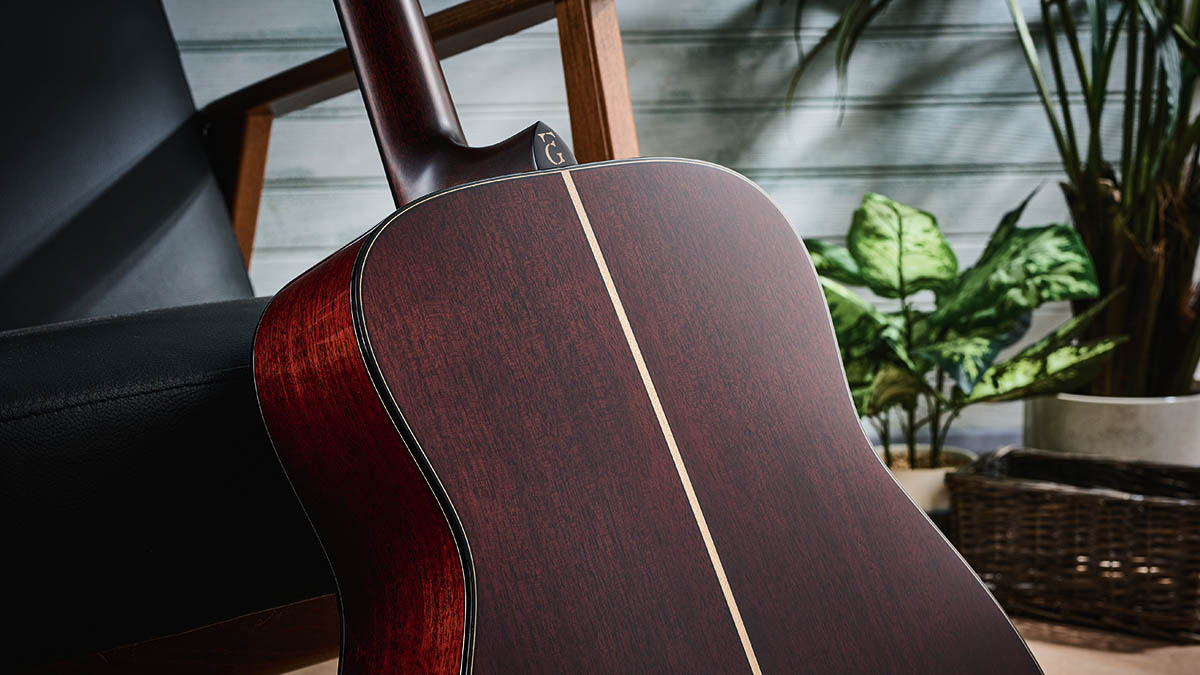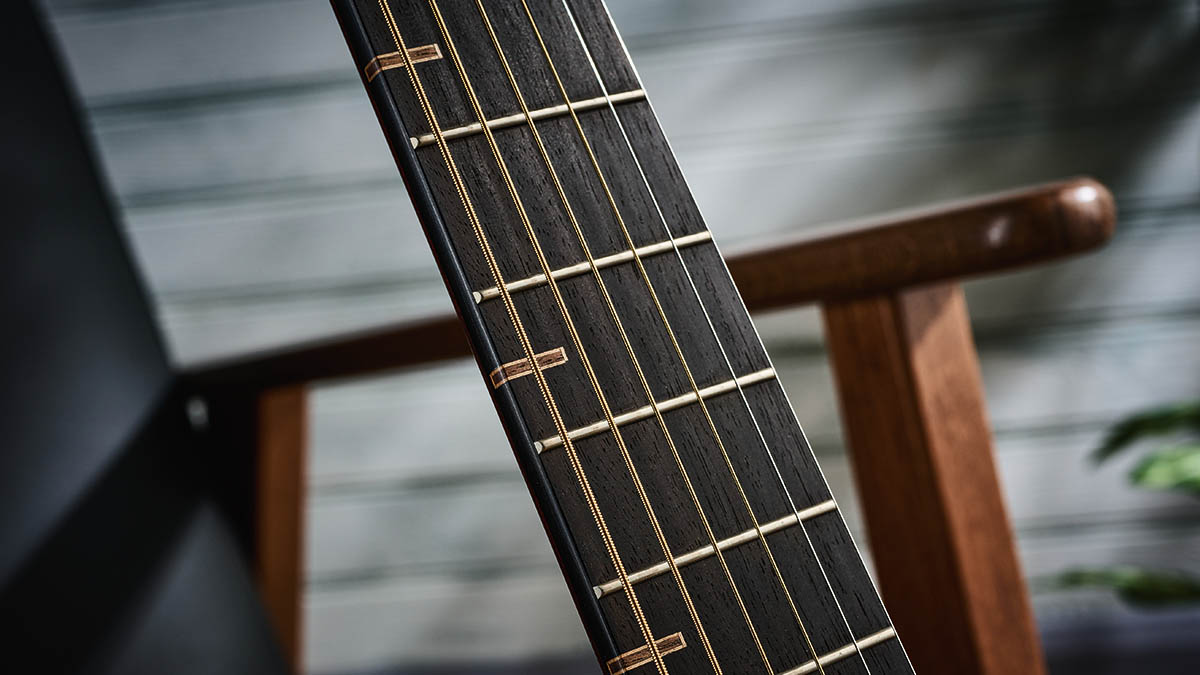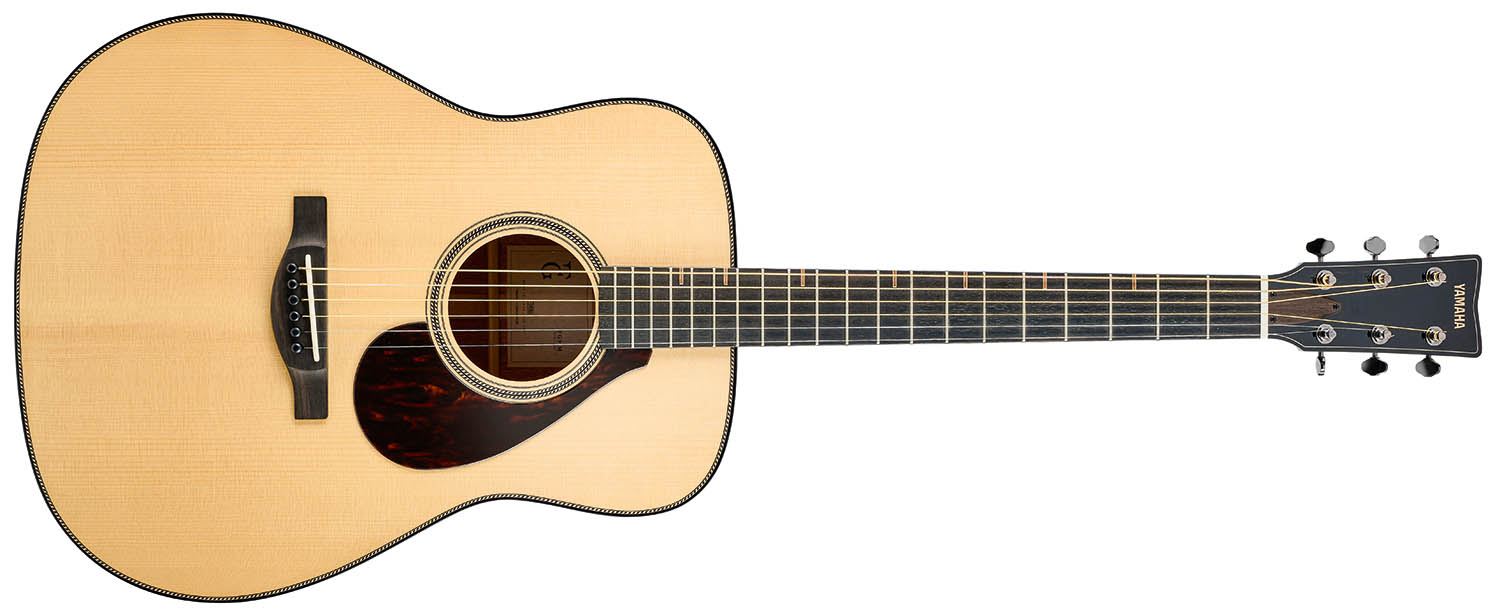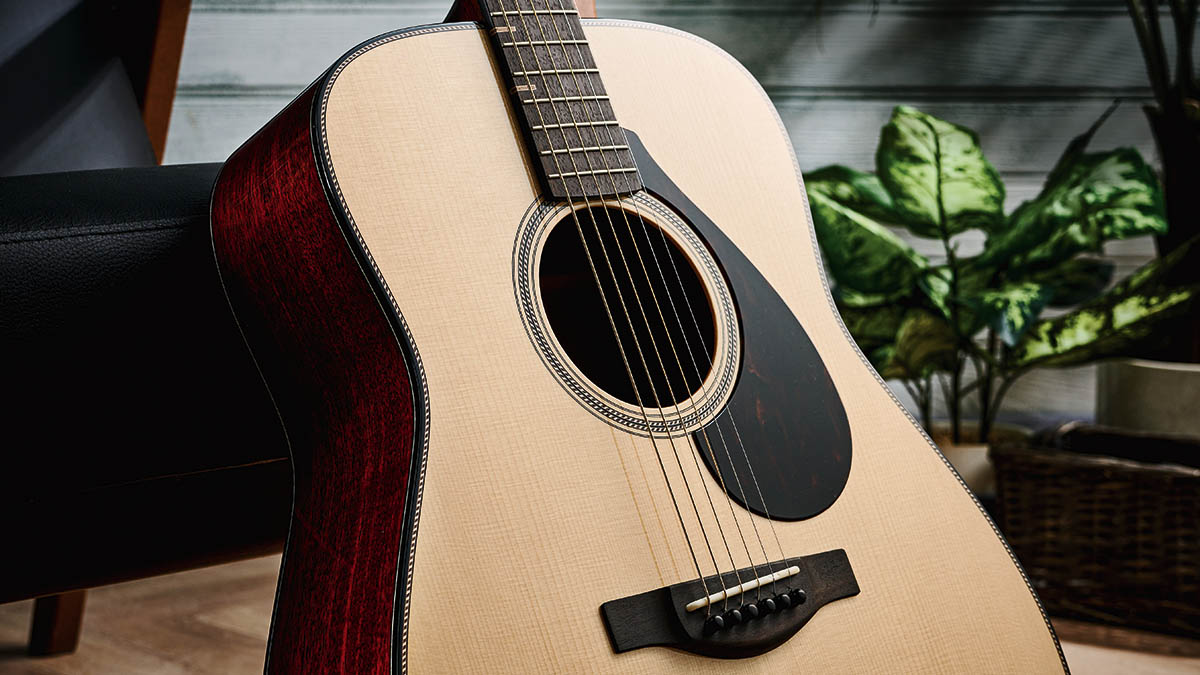Guitar World Verdict
Yamaha acoustics have a great reputation as beginner’s and affordable intermediate instruments, but the FG9 M shows that Yamaha deserves serious consideration from guitarists seeking top-quality, no-compromise professional acoustics as well.
Pros
- +
Big and bold tones.
- +
Outstanding playability.
- +
Tone is ideal for songwriters and soloists.
- +
Clean, understated design.
Cons
- -
Nothing.
You can trust Guitar World
When most guitarists talk about acoustic steel-string guitars, a few American brands like Martin, Taylor and Gibson usually dominate the discussion.
However, for many decades Yamaha has remained the world’s best-selling acoustic guitar brand, quietly but prominently leading the market thanks to the incredible value and quality that Yamaha instruments offer beginning-to-intermediate guitarists. It’s like Yamaha acoustics are so ubiquitous, players simply take their presence for granted.
With the recent introduction of their FG9 model steel string flattops, Yamaha has made a bold statement by offering guitars that deserve serious consideration by guitarists seeking an uncompromising, professional quality acoustic.
Meticulously designed by Yamaha’s most experienced and skilled custom shop luthiers, using a combination of scientific analysis and handcrafted attention to detail, the FG9 represents Yamaha’s decades of insight as well as its cutting-edge vision for the acoustic’s future.
Two FG9 models are available, both dreadnought style with the main differences being rosewood (FG9 R) and mahogany (FG9 M) construction. We took a look at the latter model.

Features
The FG9 M’s overall specs follow the relatively standard, classic formula for a square-shoulder, non-cutaway dreadnought.
The top is solid Adirondack spruce with scalloped x-bracing and tapered edges; the back and sides are solid African mahogany; and the bolt-on one-piece mahogany neck offers an ebony fingerboard, slightly longer 25 9/16-inch scale length, flat 15 ¾-inch radius and 20 medium frets.
The belly bridge and bridge pins are ebony; and the nut and saddle are bone, the latter featuring compensation for the B string. Tuners are open-back Gotoh SXN510 models with a Cosmo Black finish.

Styling is relatively minimalistic. The body is bound with ebony strips and rope-pattern (sort of a “half herringbone” design) top purfling, and two rope-pattern rings surround the soundhole.
The layered wooden rectangular fingerboard fret marker inlays are reminiscent of Japanese Kumiko woodworking geometric patterns and are placed along the low E and A strings extending into the upper edge to do double-duty as side markers.
The pickguard has a subtle “tortoiseshell” pattern, and the headstock is simply appointed with an inlaid wooden Yamaha logo and pinstripe outline. The body is finished with gloss nitrocellulose lacquer while the neck has a durable semi-gloss polyurethane finish.
Performance
While the Yamaha FG9 M’s overall appearance is unstated and elegant, its tone is bold and attention-getting. Bass notes vibrate the top and body with vigor that you can really feel, yet low notes remain tight and focused and don’t overwhelm the midrange and treble.
The mids are subtly scooped, maintaining sufficient body when chords are strummed while carving just enough frequencies to allow vocals to dominate. Yamaha notes that the FG9 M is ideal for singer-songwriters, and that certainly shows.
However, the mids hold their own nicely and maintain balance with bass and treble notes when playing the guitar fingerstyle, so this model is also ideal for solo instrumental performers. The treble projects with a crisp, metallic cut with impressive body.

The sound chamber’s resonance is rich and complex, with a subtle hall reverb-like decay even when playing above the 12th fret on the high E string. Volume projection is notably louder than a typical dreadnought, particularly when playing notes with a light touch and not just when bashing chords.
Playability is outstanding as well. The neck’s profile has a shallow C shape that transforms to a subtle, rounded V at the seventh fret and up, and the frets are polished for minimal resistance and smoothly rounded for maximum comfort at the fretboard edges.
Materials and craftsmanship are first-class, with our example featuring an arrow-straight, medium width grain pattern on the top and the back and sides featuring similarly straight grain and subtle dark streaks.
Specs
- PRICE: $3,999 / £3,299 (inc. hardshell case)
- TYPE: Dreadnought acoustic guitar
- TOP: Spruce
- BACK AND SIDES: Mahogany
- NECK: Mahogany neck, semi-gloss
- SCALE LENGTH: 25.5"
- FINGERBOARD: 15.75" radius, ebony, with Kumiki-inspired inlay
- FRETS: 20
- NUT/WIDTH: Bone, 1.75"/44.45mm
- BRIDGE/SADDLE: Ebony, bone
- TUNERS: Gotoh, open gear
- FINISH: Natural, gloss nitrocellulose on body, semi-gloss poly on neck
- CONTACT: Yamaha
Chris is the co-author of Eruption - Conversations with Eddie Van Halen. He is a 40-year music industry veteran who started at Boardwalk Entertainment (Joan Jett, Night Ranger) and Roland US before becoming a guitar journalist in 1991. He has interviewed more than 600 artists, written more than 1,400 product reviews and contributed to Jeff Beck’s Beck 01: Hot Rods and Rock & Roll and Eric Clapton’s Six String Stories.
“I liked that they were the underdogs. It was not the mainstream guitar. It was something that was hard to find”: Vox guitars deserve a second look – just ask L.A. Witch’s Sade Sanchez, who’s teaming hers with ugly pedals for nouveau garage rock thrills
“I suppose I felt that I deserved it for the amount of seriousness that I’d put into it. My head was huge!” “Clapton is God” graffiti made him a guitar legend when he was barely 20 – he says he was far from uncomfortable with the adulation at the time
“I was in a frenzy about it being trapped and burnt up. I knew I'd never be able to replace it”: After being pulled from the wreckage of a car crash, John Sykes ran back to his burning vehicle to save his beloved '76 Les Paul












